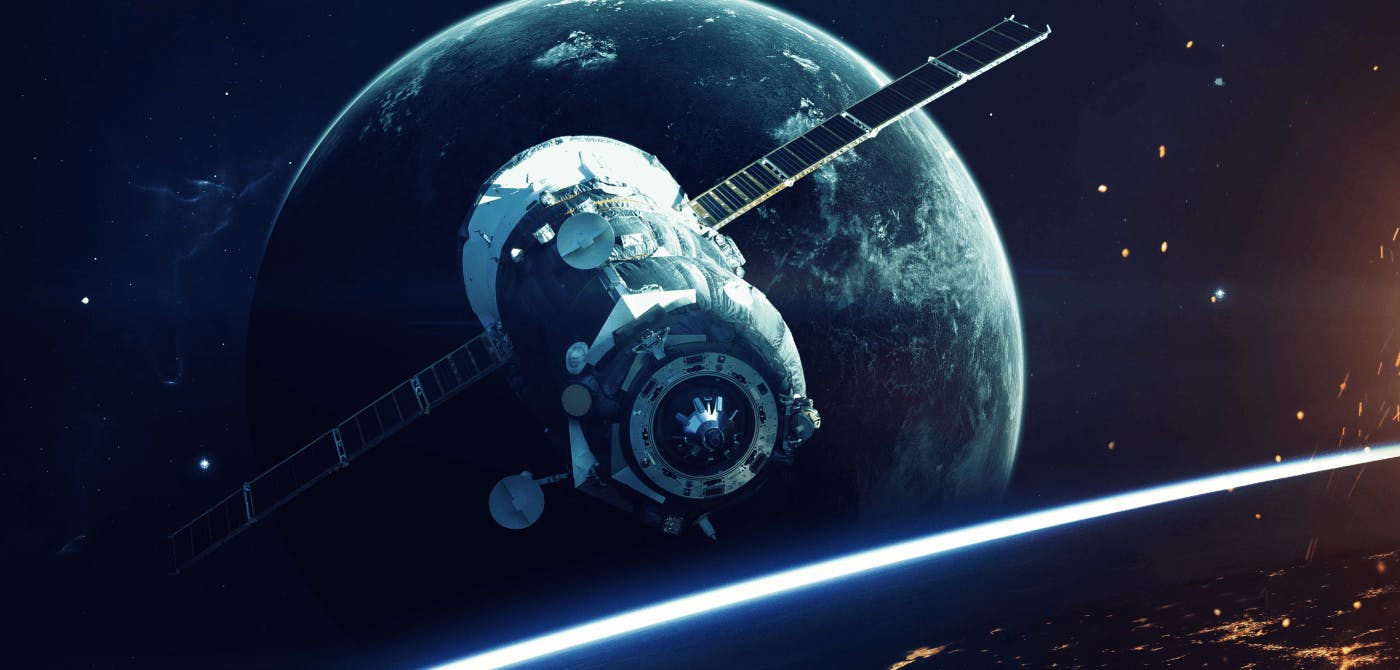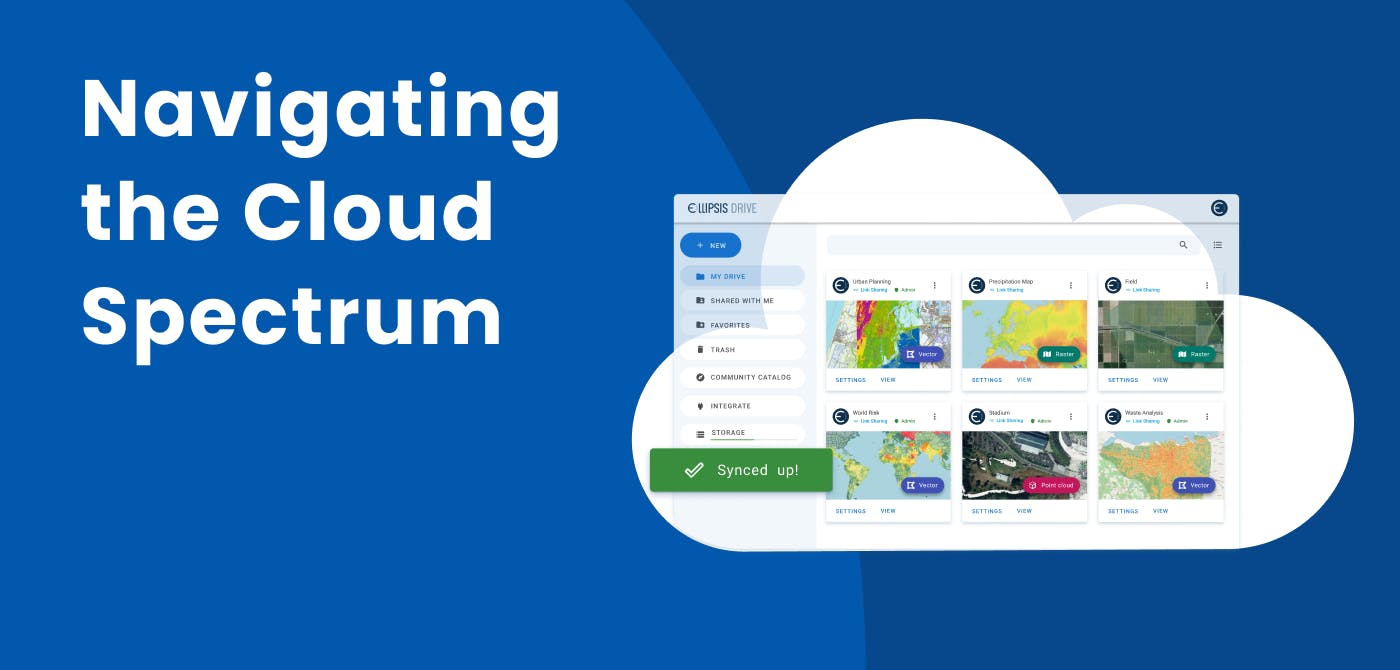GIS
A SmallSatellite Operator’s Journey (Part 1): Changing Landscapes for the SmallSat Industry

“Relax, it is not rocket science!”
Have you ever used such a phrase to convey the simplicity of a situation? Well, we sure have.
Rocket science has always been linked to complexity and scientific advancements that truly captures the human race’s progress so far. And the story is just getting started. More than 6000 satellites have been launched into space so far with over 1500 in the year 2021 alone. Space is closer now!
Well, today’s topic is closely related to rockets. Rockets are propelling Earth Observation satellites into space with higher and higher efficiency. In this article series, we will take you through the journey of small satellite entrepreneurs and operators with a keen focus on the evolution of this industry and the reasons behind it. So buckle off and get ready for lift off!
Contents
What is a Small Satellite?
As the name suggests, small satellites are smaller in size than the regular satellites we may be more familiar with. How small? Here’s a list below to put things into perspective -
Minisatellite, 100-180 kilograms
Microsatellite, 10-100 kilograms
Nanosatellite, 1-10 kilograms
Picosatellite, 0.01-1 kilograms
Femtosatellite, 0.001-0.01 kilograms
Depending upon the use case, one particular type can be selected over the other.
Because of their compactness and cost effectiveness, they have grown in popularity in recent years, especially amongst space related start ups as they have opened the doorway to space and the markets they can service with various EO applications.
If you are curious to know how a satellite is launched into space, then click here for a quick video explanation.
Bear in mind that the beauty of small satellites is that despite achieving this level of compactness, they are still fully functional in all other aspects that a satellite is designed for. They are more than capable of capturing EO data through different sources (photo sensory, LIDAR, SAR etc.), but more on this later.
SmallSat Operators
The road for a SmallSat operator is one filled with lots of complexities and hard work. There are several barriers to entry as well. The initial investment, size of the challenge and the overall nature of the industry is enough to scare away most asspiring operators and startups in this space.
Despite all these reasons, it is still an exciting time to be a SmallSat operator.
Having been there and done it all on their own (by launching 100s of their own satellites), vintage companies in the satellite service industry such as Satellogic, Endurosat, Spire and NanoAvionics are extending their expertise, industry knowledge and personal learnings with new space start-ups to promote the growth of this industry.
This has given birth to the concept of Satellite-as-a-Service, where the above mentioned players help companies with launching a satellite at a reasonable price point. Right from assisting with the technological know-how to the final mission management, these companies have you covered. New space companies can literally ride on their experience and domain knowledge.
It is the perfect example of delayed gratification. The patience and perseverance of the early SmallSat operators is now being rewarded with the increased ease with which satellites can be launched into space. Let’s look at the journey of this industry.
Evolution of the SmallSat Industry
The smallsat industry wasn’t born overnight. It took years and decades of research and hard work for such a technology to be brought to light and more importantly, applied in real life use cases.
There are certain factors that played a key role in the evolution of this space and helped become what it is today.
1. Growth and establishment of commercial flight systems
Satellites can either be launched using their own rocket launcher or they can be docked in the cargo section of space shuttles. In either case, it is easy to share a space ride now more than ever. The number of space expeditions is constantly on the rise, and with this, so is the rise of organizations that manage such space expeditions.
2. Expansion of measurement capabilities from innovative miniaturized instruments
A small sized satellite also means smaller measurement instruments that can be fitted onto the satellite. There have been such exciting advancements in this space. SmallSats can be fitted with highly sensitive sensors and data collection devices which are not only effective but also light weight. An important consideration while designing for compactness. Building these instruments (and doing it well) is very niche work.
3. Diversity of options for access to space (ISS, dedicated launches and containerized /ESPA rideshare)
The boundaries of space are disappearing faster than ever. There are new satellites being launched every week. With so many space players in the market, the feasibility and availability of rideshare programs and flexible launches is high. SmallSat operators can easily plan their launches as per the option that best suits their needs and schedule.
The Changing Scenario for SmallSat Operators and EO entrepreneurs
It was not too long ago that it easily took 6 years for a single satellite to be launched into space, and even more time for the data that was collected to be sent back to Earth. The entire ecosystem was so new that companies were on their own in fixing any and all problems that blocked their path.
This led to companies being vertically integrated. Meaning that they worked in silos and each minor process in building a satellite was dependent on the other, creating a longer supply chain and turn around time. Not a synergetic approach at all!
The current day scenario is pretty different from this (pretty grim) past riddled with unknown obstacles. The entire ecosystem has become more horizontally integrated. This means that companies have focused their scope and collaborated with one another to form a chain that achieve the same effect as a single vertically integrated company, only more efficiently (focus is everything in business).
Companies are specializing in individual satellite components, launch services, operations services and ground segment services. This has given birth to an ecosystem that can create pretty customized solutions as per the project’s needs.
This has accelerated the turnaround time and the growth of the industry at large. The barriers for new players to enter have gone down drastically as they can rely on the expertise and experience of their peers and of the 'avant garde' players in the market. Initial costs in terms of time and resources have gone down several folds. As a result, the time to create consumable data of value and generate revenue out of it, has taken a welcomed dip as well.
Conclusion
We hope to have laid the groundwork for you with regards to the SmallSatellite industry and how the industry has progressed and evolved in recent years.
In the next edition of this blog series, we will take you through the “How” part of the SmallSat industry - How does an operator create a micro version of a satellite and send it into space?
Make sure you subscribe to our newsletter and follow us on social media to not miss any updates.
Until next time. To infinity and beyond!
Liked what you read?

Subscribe to our monthly newsletter to receive the latest blogs, news and updates.
Take the Ellipsis Drive tour
in less than 2 minutes'
- A step-by-step guide on how to activate your geospatial data
- Become familiar with our user-friendly interface & design
- View your data integration options

Related Articles

Navigating the Cloud Spectrum: From Generalist to Specialized, and the Perfect Middle Ground
The modern cloud ecosystem spans a wide spectrum of offerings, from general-purpose infrastructure to highly specialized platforms built for domain-specific tasks. At one end, generalist clouds provi
5 min read

Unlocking the Potential of Data: Comparing Tabular and Non-Tabular Protocols
The world of data is a complex landscape and each year, the complexity of that landscape grows exponentially. A combination of new data capturing technology, data processing technology and demands fo
6 min read

Understanding the importance of GIS in Urban Planning
Cities are robust places filled with life, but before it becomes a cosmopolitan paradise, plenty of ever-evolving complexities are happening behind the scenes to bridge the gaps and create an area spa
3 min read